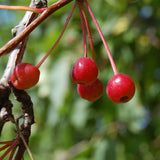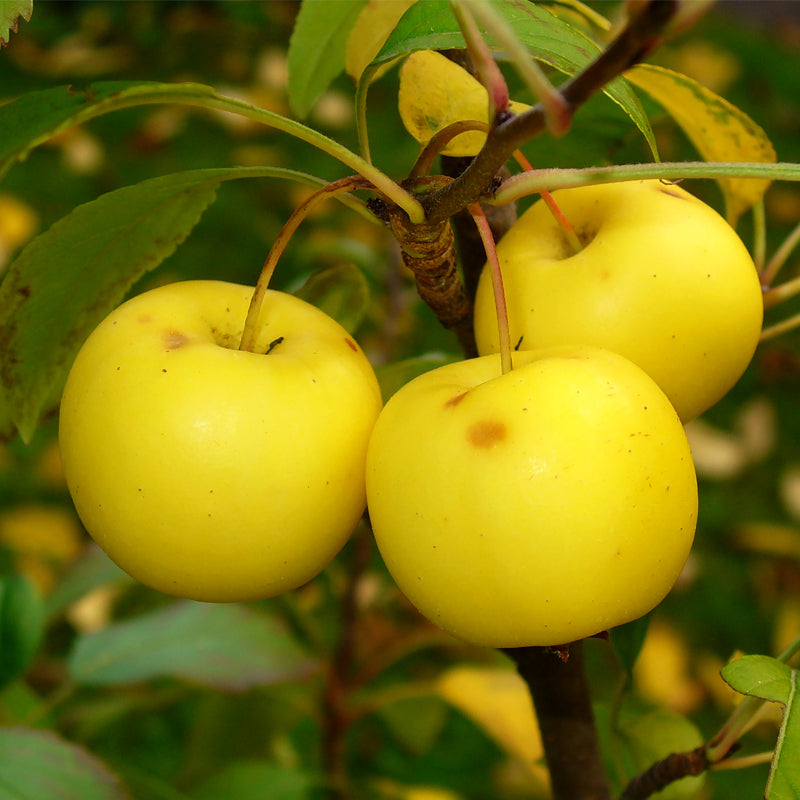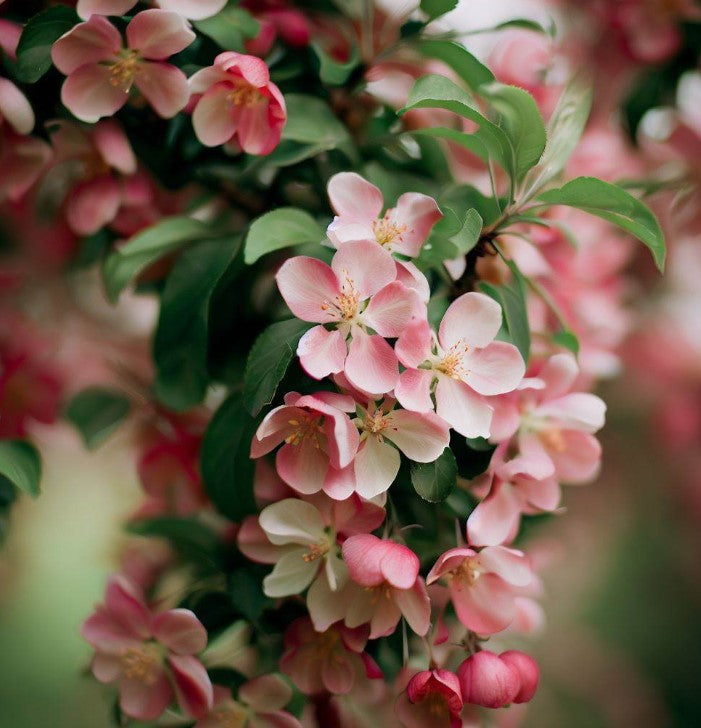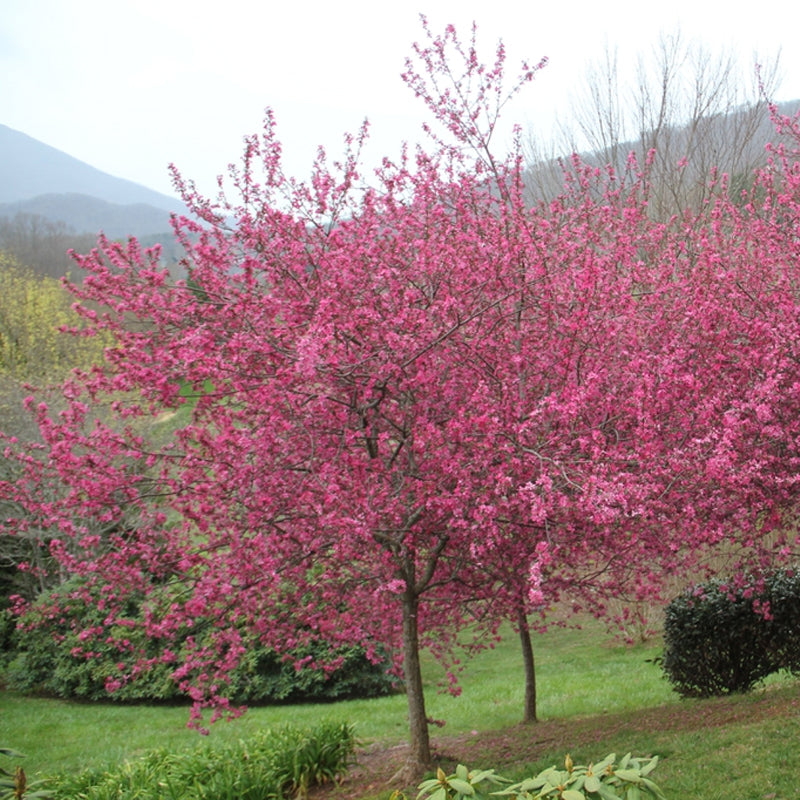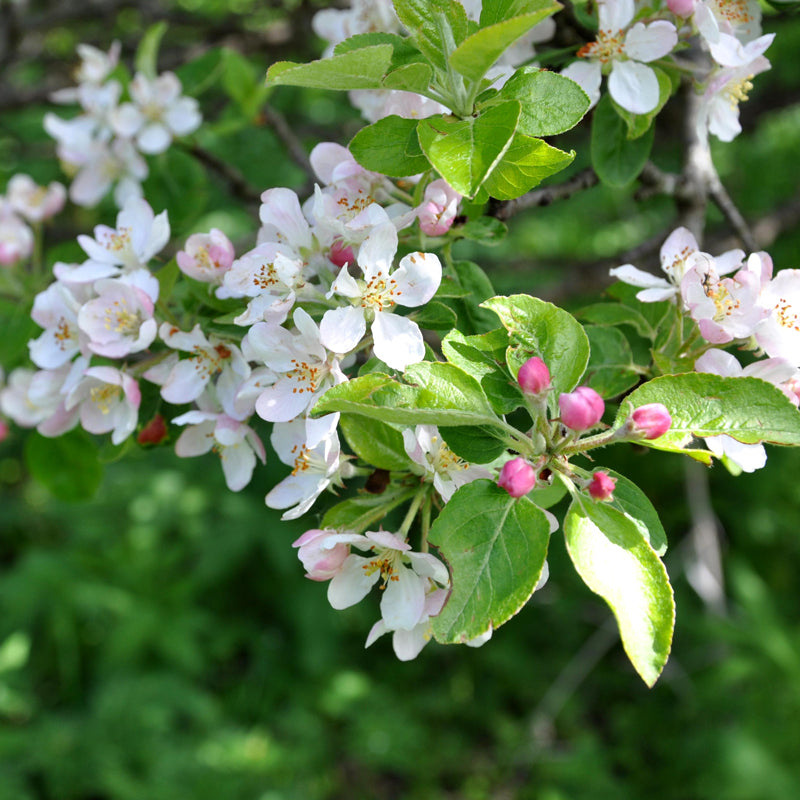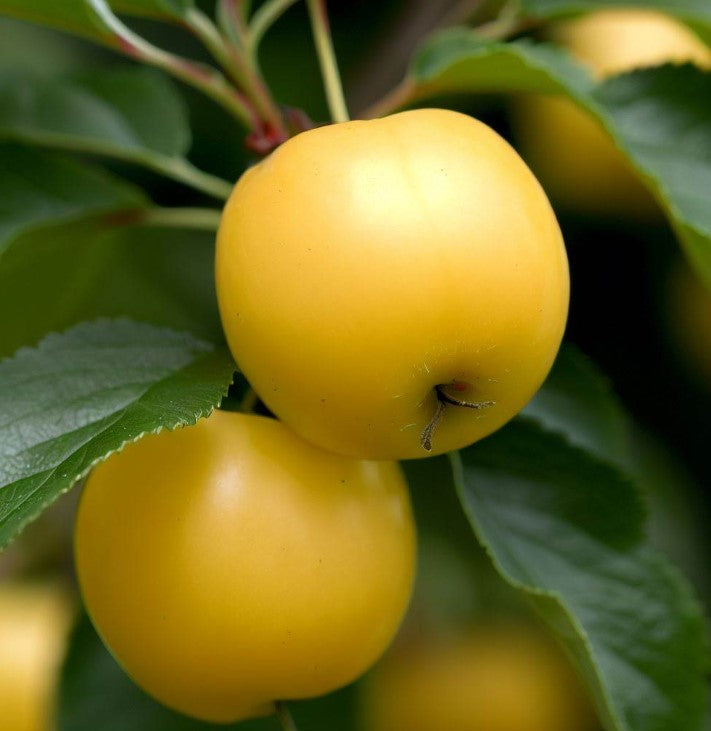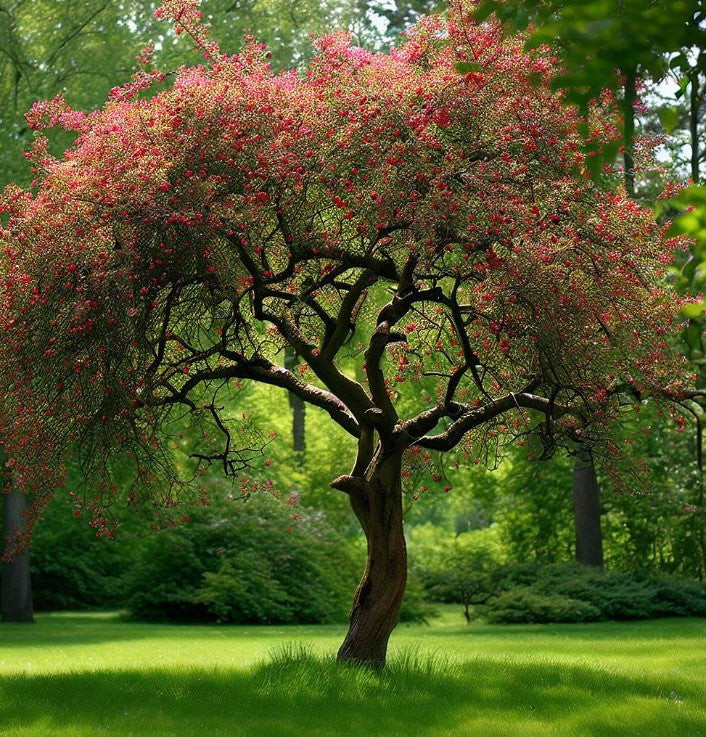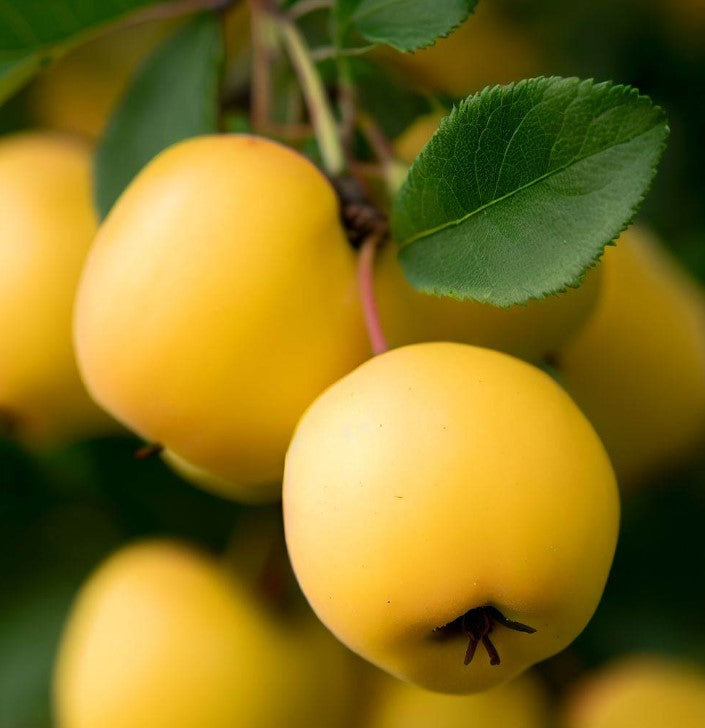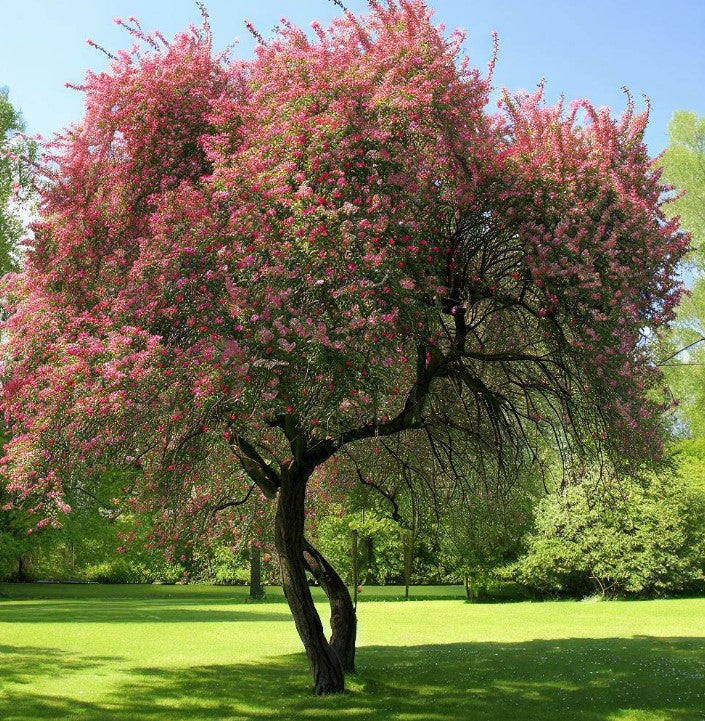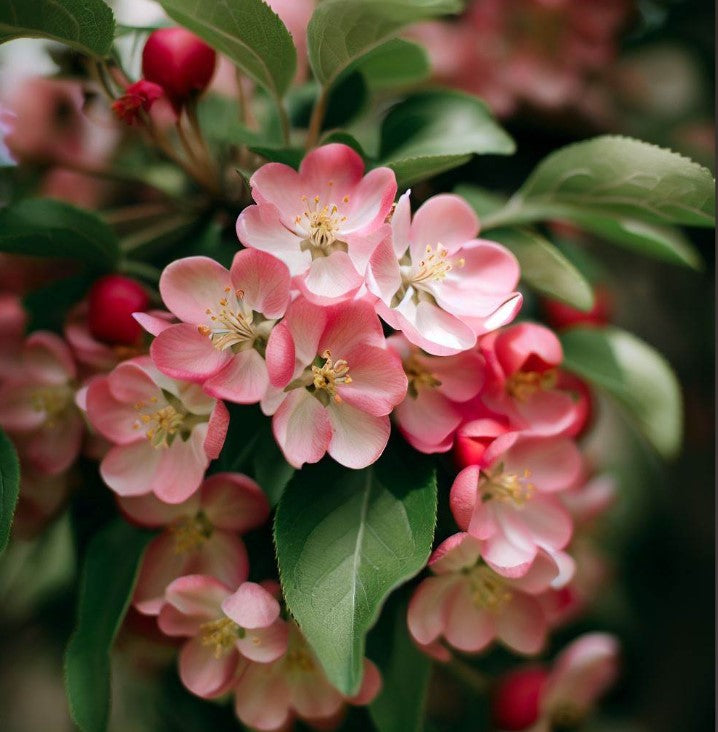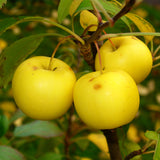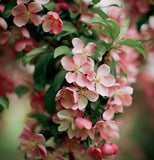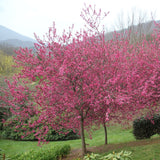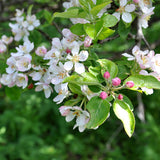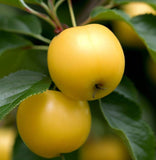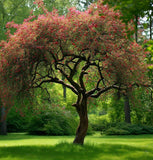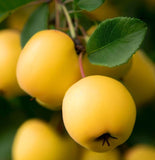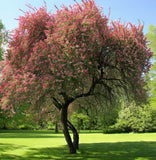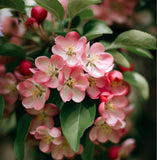Malus sylvestris (French Crabapple)
Malus sylvestris (French Crabapple) is a species of apple tree native to Europe and Western Asia. It is a small to medium-sized tree that is appreciated for its historical significance, ornamental value, and contribution to the genetic diversity of cultivated apple varieties. Here is some information about the French Crabapple:
Appearance: French Crabapple is a deciduous tree that typically grows to a height of 20 to 40 feet (6 to 12 meters) with a similar spread. It has a rounded or spreading crown with dense branching. The leaves are ovate and serrated, with a dark green color. In the fall, the foliage may turn shades of yellow, orange, or red, adding a touch of autumnal beauty.
Flowers: The tree produces clusters of fragrant, five-petaled flowers in shades of white or pale pink. The flowers are typically small in size but create a delightful display when in bloom. They appear in spring, usually in May, and attract pollinators like bees and butterflies.
Fruits: French Crabapple bears small to medium-sized apples that are typically around 1 inch (2.5 centimeters) in diameter. The apples have a rounded or slightly flattened shape and can vary in color, ranging from greenish-yellow to red or orange. They have a tart or sour flavor and are not typically consumed fresh. However, they are valued for their culinary use in making jellies, jams, ciders, or brandy. Additionally, the fruits serve as a food source for wildlife, including birds.
Genetic Importance: French Crabapple holds significant importance in the history and cultivation of apple varieties. It is considered a wild ancestor of the domesticated apple (Malus domestica). The species contributes to the genetic diversity of cultivated apple varieties through cross-pollination and hybridization. Many apple cultivars trace their ancestry back to the French Crabapple, showcasing its genetic influence and impact on apple breeding.
Ecological Role: French Crabapple plays a role in supporting biodiversity. The tree provides habitat, food, and shelter for various wildlife species, including birds, insects, and mammals. It contributes to the overall ecological balance and serves as an important element in natural and wildlife gardens.
French Crabapple trees prefer full sun to partial shade and can tolerate a range of soil types, including well-drained soils. They are generally hardy and adaptable but may benefit from occasional watering during dry spells. Pruning can be done to shape the tree or remove any dead or diseased branches.
Botanical Name : Malus sylvestris
Common Name : French Crabapple
Height : 30-40 ft
Spread : 25 ft
Germination Info : Seed requires 60-90 days cold moist stratification
Hardiness zone : 3-7
Average seed per ounce : Approx. 750


